Latino, Native and Black history in Topeka is celebrated in new mural in Topeka's NOTO Arts District
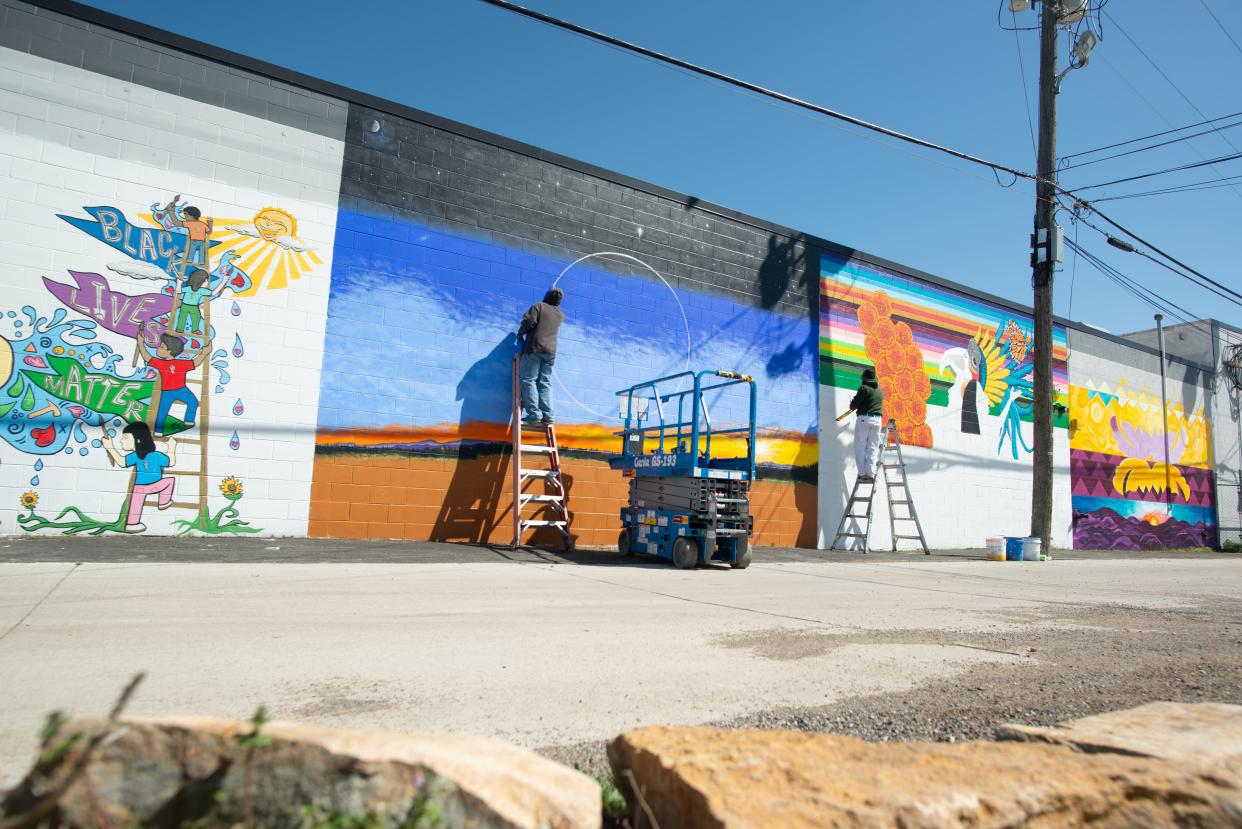
The heritage, history and contributions of Latino, Native and Black residents in Topeka are celebrated in a new mural in North Topeka.
The mural is on the side of Habitat for Humanity's ReStore building, 121 N.E. Gordon St. in the NOTO Arts District. The mural was inspired by the murder of George Floyd.
“We talk about ‘Black Lives Matter’ and we talk about maybe doing something to make a statement," said Glenda Washington, chief equity and opportunity officer at the Greater Topeka Partnership. "And we said, 'All lives matter, so let’s put together a multicultural mural.'"
The new mural is adjacent to Jordan Brooks' existing mural, which includes children climbing a ladder with "Black Lives Matter" flags.
“It’s just another added element that says we're all here as Topekans and have that show of solidarity and cultural recognition,” said Christina Valdivia-Alcalá, founder and director of the Tonantzin Society.
The local nonprofit organization — which promotes Latino, Chicano and Indigenous art, environment and social justice — co-sponsored the mural. Tonantzin is "Our Revered Mother" in the Nauhatl language, said Valdivia-Alcalá, who is also a Topeka City Council woman.
The mural will be dedicated at 3 p.m. Friday on the east side of the ReStore building.
Native American portion focuses on Osage and Potawatomi tribes
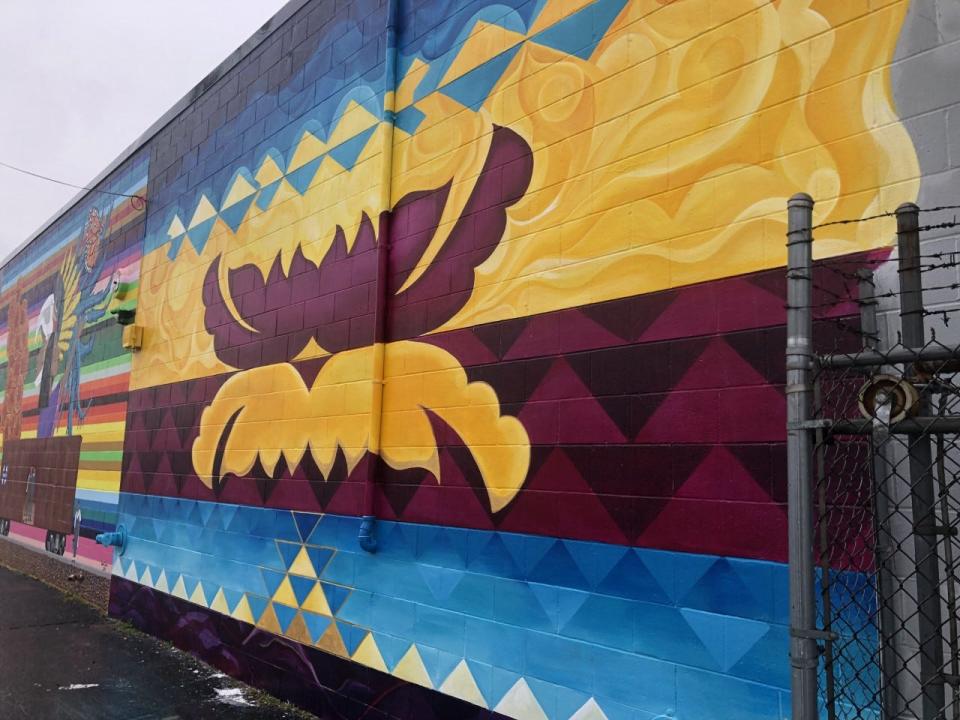
Lawrence artist Mona Cliff, an enrolled member of the A'aninin/Nakota Nations, created the portion celebrating the Osage, a tribe indigenous to this area, and the Potawatomi, a tribe forced to migrate at gunpoint from northern Indiana and Michigan in 1838 for 600 miles till they reached Kansas.
The panel, divided into four bands, represents the artwork typically found in regalia, distinctive clothing and ornaments used at formal occasions.
Cliff used contrasting color schemes with curvy and organic motifs, and as well as geometric patterns, to illustrate the piece.
"Mom, it looks like a ribbon skirt," Cliff's daughter told her.
More: Potawatomi tribal history exhibit dedicated at Burnett's Mound
While Cliff stressed that she isn't a tribal expert or authority, she did her research and based the work on her observations.
Trading with settlers brought the tribes new supplies for art.
"(It was the) beads and ribbons that really kind of changed how we expressed ourselves," she said. "What the women did were they started cutting those ribbons into shapes and creating appliques.
"That is kind of what I'm drawn to because that is kind of how I got my start."
Cliff has a piece of beaded work at the Kemper Museum of Contemporary Art, and she has been commissioned to provide a beaded piece spanning 17 feet for the new Kansas City Airport Terminal.
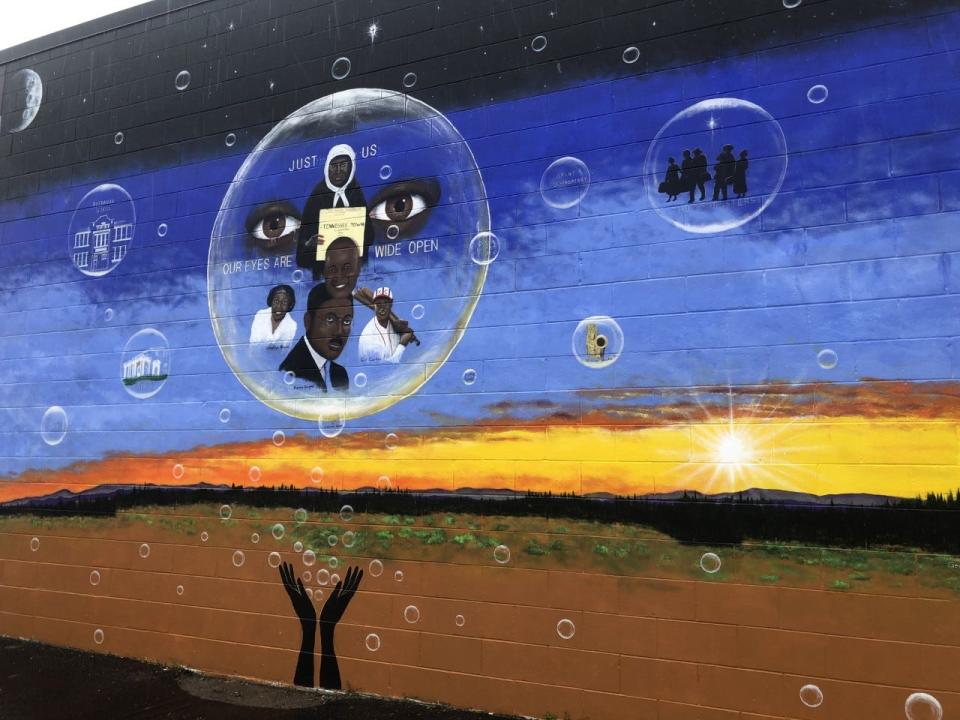
Exodusters, Tennessee Town and noted citizens portrayed
Exodusters who fled the South during the Reconstruction Era, Tennessee Town and prominent Black residents are highlighted in George Mayfield's portion of the mural.
Many Exodusters settled in Tennessee Town.
His artwork is well-known in Topeka and includes a portrait of Edward McCabe, the first Black elected official to hold a statewide office in Kansas, displayed in the state's Capitol building.
The artist, who also has works at the Kansas State Historical Society, graduated from Seaman High School in 1968. There were only a few Black students at that time.
More: Educator, community icon and KKK leader: Who was Fred Seaman?
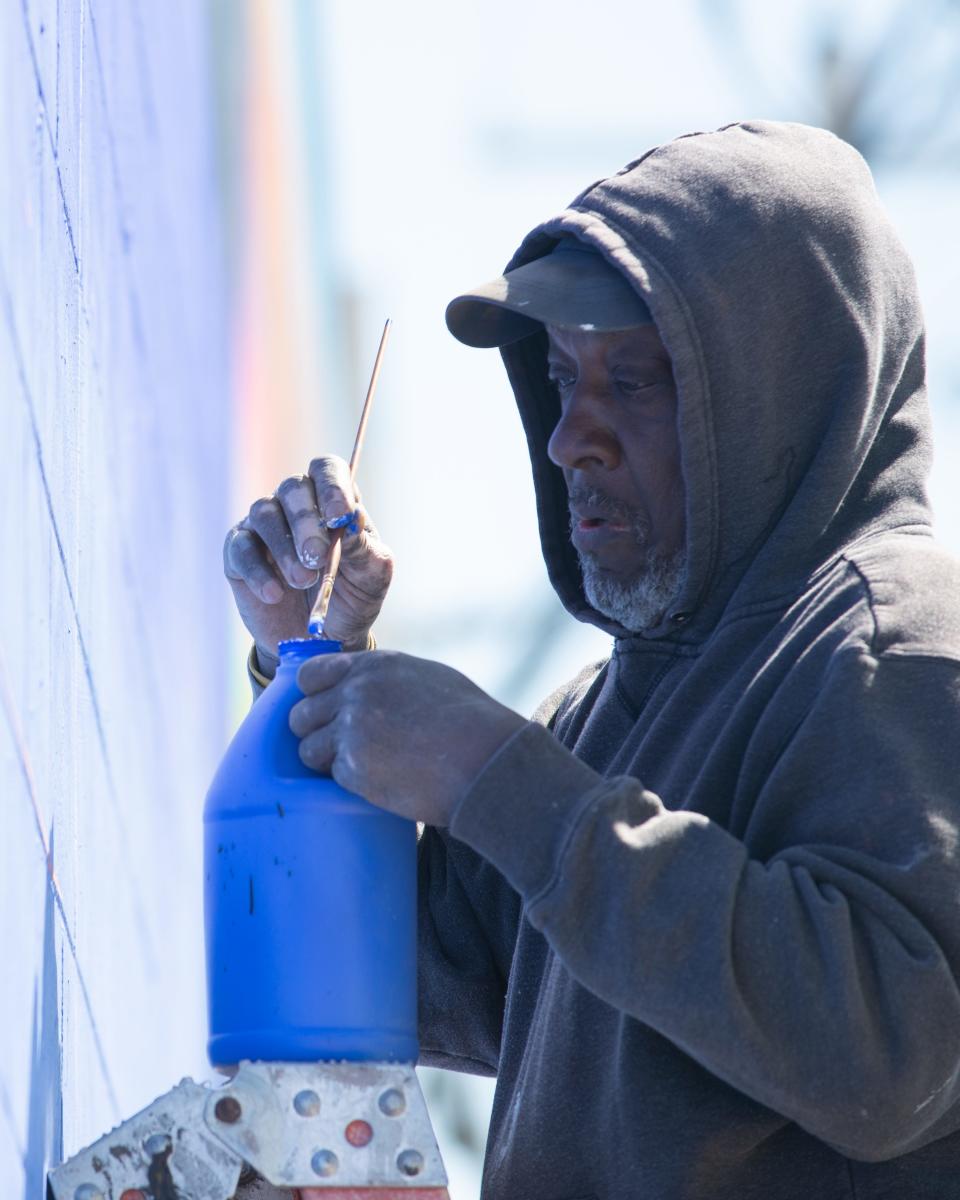
“I was the only one my junior year, and I think it was five of us my senior year,” he said. “I was elected class president my senior year. Now wasn’t that odd? People don’t believe me when I tell them that.”
Seaman schools were named after Fred A. Seaman, who later was revealed to be an exalted cyclops in the Ku Klux Klan. Mayfield said the Seaman name doesn't bother him, but he did have some advice.
"It would be nice if they had a class on who he was for all the students,” he said. "We came from this era to today.”
Marigolds, butterfly, serape shawl and train car evoke Latino immigration
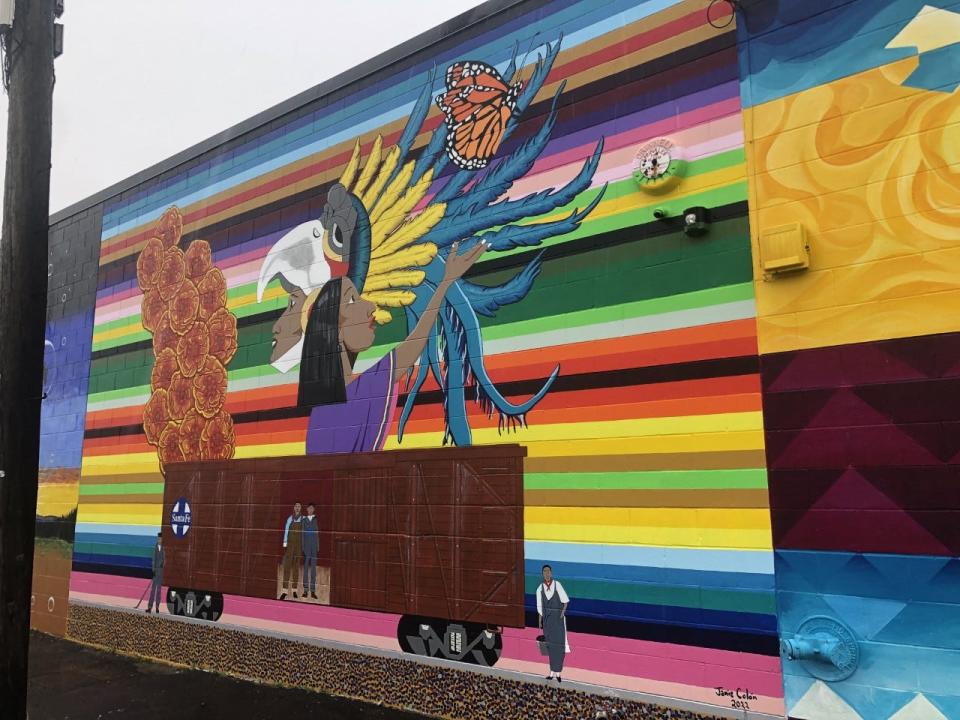
Jaime Colón's piece is full of symbols representing Latino-American heritage.
Yellow marigolds, which frequently adorn Mexican graves and altars, especially on special occasions like Dia de los Muertos, Spanish for Day of the Dead, prominently cascade across his work.
“The bright colors and the pungent smells of the marigolds are the pathway for the souls to find their way," he said.
More: Dia de los Muertos: Phoenix Day of the Dead celebrations through the years
Colón changed the variety typically used to a midwestern one to symbolize migration to Topeka.
Another symbol to signify the flight of souls and migration is the monarch butterfly.
A train car signifies the "yarda" at Santa Fe Railyard, where empty, unused train cars were converted by his ancestors into homes until more permanent housing could be found.
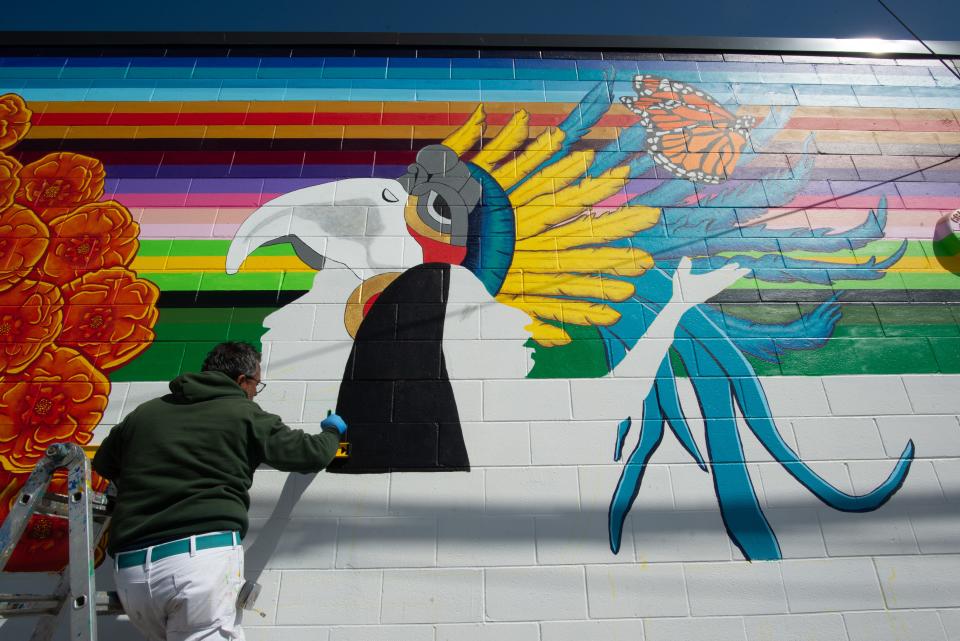
A giant serape shawl, used for many purposes, symbolizes the flexibility Mexican immigrants needed to thrive.
"As these folks migrated here they had to be multifunctional as well, so it represents their ability to adapt to different situations," Colón said.
The artist's work can seen throughout Topeka. He was chosen as the featured artist at the 2014 Aaron Douglas Art Fair.
Some events in NOTO this weekend
While in NOTO to see the new mural, check out the following events.
"Prairie Me Home: an Immersive Art Exhibit" will mix art with sounds of nature and smells of natural elements inside the Morris Gallery in NOTO Arts Center, 935 N. Kansas Ave. Hours are 11 a.m. to 8 p.m. Friday, 10 a.m. to 3 p.m. Saturday and 10 a.m. to 3 p.m. Sunday.
Musician Josh Hoover will perform from 6-9 p.m. Friday at Redbud Park, 935 N. Kansas Ave. Attendees are encouraged to bring lawn chairs.
Mark and the Sharks, Mark Toelkes, Doug Renbarger, Kelly Stansbury and Rick Aubrey, will play classic rock 'n' roll from 7-10 p.m. at the Compass Point Pontoon stage, 800 N. Kansas Ave. TBD Foods will have a food truck that opens at 6 p.m.
NOTO Saturday Market will have arts and crafts, and antique vendors from 10 a.m. to 3 p.m. at Redbud Park. Entertainment is featured on most Saturdays.
This article originally appeared on Topeka Capital-Journal: Latino, Native, African Americans contributions featured in NOTO mural

